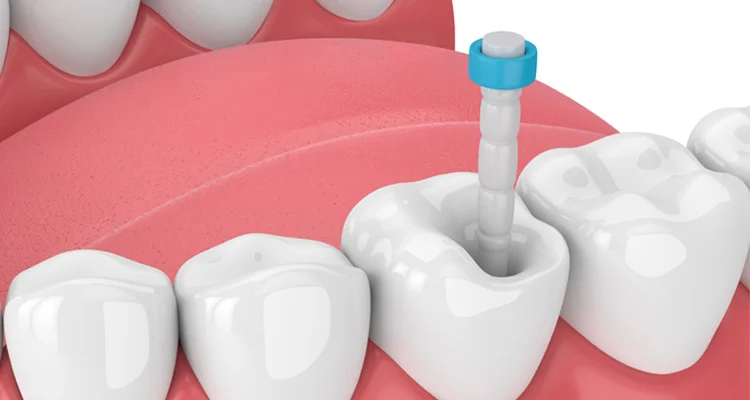Orthodontic treatment, often involving braces or aligners, is commonly sought to correct dental misalignments and improve oral health. However, some individuals may wonder about the consequences of not pursuing such treatment. This article explores the potential outcomes and risks associated with forgoing orthodontic intervention.
Introduction
Orthodontic issues range from minor crowding to severe malocclusions, impacting both dental aesthetics and functionality.
While many people opt for orthodontic treatment for cosmetic reasons, the benefits extend far beyond aesthetics.
Understanding what happens when orthodontic issues are left untreated is crucial for making informed decisions about dental care.
Potential Consequences of Untreated Orthodontic Problems
Dental Health Complications
Misaligned teeth can lead to various dental health issues:
Tooth Decay and Gum Disease: Crooked or crowded teeth are harder to clean thoroughly, increasing the risk of plaque buildup, cavities, and gum inflammation.
Uneven Wear and Damage: Misaligned teeth may experience uneven wear due to abnormal biting patterns, potentially leading to premature enamel erosion or chipping.
Temporomandibular Joint Disorders (TMJ): Malocclusions can strain the jaw muscles and joints, contributing to TMJ disorders characterized by pain, clicking, or difficulty in jaw movement.
see also: 5 Countries with The Best Orthodontic Treatment
Speech and Chewing Difficulties
Dental misalignments can affect speech clarity and the ability to chew food properly:
Speech Impediments: Overbites, underbites, or gaps between teeth can interfere with proper tongue placement, affecting speech sounds like “s,” “sh,” or “ch.”
Chewing Problems: Misaligned teeth may not meet correctly when chewing, leading to inefficient chewing, digestive issues, and even dietary limitations.
Psychosocial Impact
Beyond physical health, untreated orthodontic issues can affect emotional well-being:
Self-Esteem Issues: Visible dental irregularities may lead to self-consciousness, particularly during social interactions or when smiling for photographs.
Impact on Professional and Social Life: Perception of attractiveness can influence personal relationships and career opportunities, potentially affecting confidence levels.
Specific Orthodontic Conditions And Their Risks
Crowding and Overcrowding
Increased Risk of Tooth Decay: Crowded teeth create tight spaces that are difficult to clean thoroughly, promoting plaque buildup and decay.
Potential Impaction: Severely crowded teeth may fail to erupt properly, leading to impaction and requiring more invasive treatments like extraction or surgical exposure.
Overbites and Underbites
Risk of Jaw Pain: Uneven pressure distribution on the jaw joints due to overbites or underbites can strain the temporomandibular joints (TMJs), causing discomfort or pain.
Speech Impediments: Severe overbites or underbites may affect speech clarity due to altered tongue placement or airflow.
Gaps and Spacing Issues
Gum Health Concerns: Large gaps between teeth can expose the gums to irritation, potentially leading to gum disease or recession.
Aesthetic Concerns: Visible gaps between teeth may impact smile aesthetics, affecting self-confidence and social interactions.
Long-Term Risks of Delaying Treatment
Compounding Issues
Progressive Nature: Orthodontic problems can worsen over time without intervention, potentially requiring more extensive and costly treatment in the future.
Increased Treatment Complexity: Delaying orthodontic correction may necessitate additional procedures such as tooth extraction, orthognathic surgery, or prolonged treatment duration.
Functional And Structural Consequences
Facial Symmetry: Severe malocclusions may affect facial aesthetics and symmetry, influencing overall facial harmony.
Dental Functionality: Misaligned teeth can compromise bite function, affecting chewing efficiency and long-term oral health.
Conclusion
Orthodontic treatment plays a crucial role in correcting dental misalignments, improving oral health, and enhancing overall well-being. While the decision to pursue orthodontic care is personal, understanding the potential consequences of untreated orthodontic problems is essential. From dental health complications to psychosocial impacts, untreated orthodontic issues can have far-reaching effects on oral health and quality of life. Consulting with a qualified orthodontist can provide personalized insights and guidance tailored to individual dental needs and goals, ensuring informed decisions and optimal oral health outcomes.
FAQs
How Long Can You Go Without Seeing Your Orthodontist?
The frequency of orthodontic visits typically varies based on the individual treatment plan and the severity of the orthodontic issues being addressed. Here are some general considerations:
Scheduled Appointments: Orthodontic treatment usually involves scheduled appointments every 4-8 weeks, depending on the treatment phase and the orthodontist’s recommendations.
Monitoring Progress: Regular visits allow the orthodontist to monitor the progress of tooth movement, make necessary adjustments to braces or aligners, and ensure the treatment plan is on track.
Impact of Missed Appointments: Missing appointments can delay treatment progress, prolong the overall treatment duration, and potentially affect the final outcome of orthodontic correction.
Emergency Situations: In case of emergencies such as broken brackets, wires, or discomfort, it’s crucial to contact your orthodontist promptly for appropriate guidance or adjustments.
What Happens if You Don’t Go to the Orthodontist for Months?
Delaying or missing orthodontic appointments can lead to several potential consequences:
Treatment Interruption: Lack of timely adjustments can slow down or halt progress in correcting dental misalignments, potentially prolonging the overall treatment duration.
Teeth Movement: Without regular monitoring and adjustments, teeth may not move as intended, leading to suboptimal results or even regression in tooth alignment.
Complications: Issues such as discomfort, broken braces or aligners, and oral hygiene challenges may arise, requiring immediate attention to prevent further complications.
Extended Treatment Time: Longer intervals between visits may necessitate more significant adjustments during subsequent appointments, increasing the complexity and duration of treatment.
Is Orthodontic Treatment Necessary?
Orthodontic treatment is recommended in various situations to address functional and aesthetic concerns related to dental misalignments:
Dental Health: Correcting misaligned teeth can improve oral hygiene by making it easier to clean teeth effectively, reducing the risk of tooth decay, gum disease, and uneven wear.
Functional Benefits: Properly aligned teeth contribute to better chewing efficiency, speech clarity, and overall bite function, enhancing oral and overall health.
Aesthetic Considerations: Orthodontic treatment can improve smile aesthetics, boosting self-confidence and social interactions.
Long-Term Oral Health: Addressing orthodontic issues early can prevent more significant dental problems later in life, potentially reducing the need for extensive dental work in the future.

